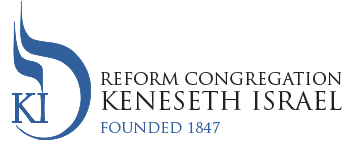It is now almost one year since Covid began impacting everyday life in the United States and around the world. Covid-19 is the most significant public health crisis in over a century and has profoundly affected the way we live, what we do and what we do not do as human beings, Americans, and Jews. Perhaps after nearly a year’s experience of hundreds of thousands of casualties, lockdowns, social isolation, social distancing, and mask wearing, it is time to take stock and assess how Covid has impacted our lives.
Since I am writing as a rabbi, I have a particular interest on the impact of Covid on Jewish life which I both love and bear responsibility. My first thought is about the impact of the pandemic on the synagogue. Clearly, Covid has changed synagogue life both in the short run and, most likely, for the long run as well. The good news is that synagogue life is enduring and, in some areas, actually is thriving. On the one hand, the use of online technology has accelerated and, in some cases, grown our audience, particularly in the area of adult Jewish education. On the other hand, many older Jews do not have access to computers or iPhones, nor do they necessarily know how to use them. Their connection to Jewish life has grown even more tenuous. By contrast, many synagogues including ours, have sought to step up their social action programs, especially with respect to food insecurity.
Less discussed is the impact of Covid on young Jews. Defining “young” is not easy but for the sake of argument, let’s say “40 or under.” In this category, participation in Jewish life was already weak in the pre-Covid era with the exception of education for Jewish youth which at most was below 50% two years ago. For at least the time being, we have lost approximately 60% of that population ostensibly because they want to limit their children’s total hours of screen time. In other words, probably less than 25% of school age Jewish children are now involved in formal Jewish education. By contrast, electronic adaptation to end of life activities such as Shiva services has increased as less travel is required. Synagogues have also begun creating various drive-thru and parking lot programs.
I do not have hard information on the impact of Covid on synagogue finances. We do know that the general rate of synagogue membership is down but that those who remain also are generous and supportive. Part of the issue here is that people today often expect online services, religious or otherwise, to be free which is obviously problematic. Marginal members of synagogues, for example, the Yom Kippur only crowd, have found Covid to provide cover for the “final leap of faith,” so to speak, into the abyss of non-affiliation. The question of their future, post-Covid return to membership is of paramount importance.
The chasm which has separated Haredi (ultra-Orthodox) life from the rest of the Jewish world has widened during the last year both in Israel and the United States. Pictures of thousands of “Black Hats” at weddings and funerals are not only startling but seem to contradict the basic Jewish value of “pikuach nefesh” (‘the saving of life’) for non-Orthodox Jews. In Israel, the usual complex weave of internal politics has made issues like national lockdowns even more complicated although the Jewish state arguably has the best national vaccination rate in the world.
Looking ahead, it would seem fair to say that a number of the online programs which have developed in response to the pandemic will remain in place in the post-Covid world. I can only hope that once enough people in the general population have been vaccinated, synagogue members will return to their houses of worship in large numbers. Then again, as I have long said, only two things keep people away from synagogue: bad weather and good weather. For sure, Covid has closed our buildings but when we do return, we probably should continue to wear masks, maintain social distance and on Purim, substitute “Covid” for Haman and boo loudly!
Shabbat Shalom,
Rabbi Lance J. Sussman, Ph.D.
